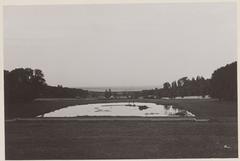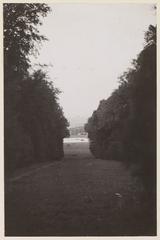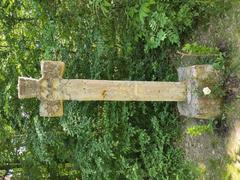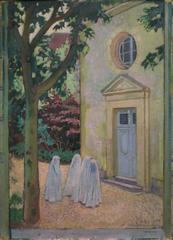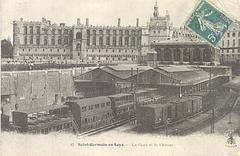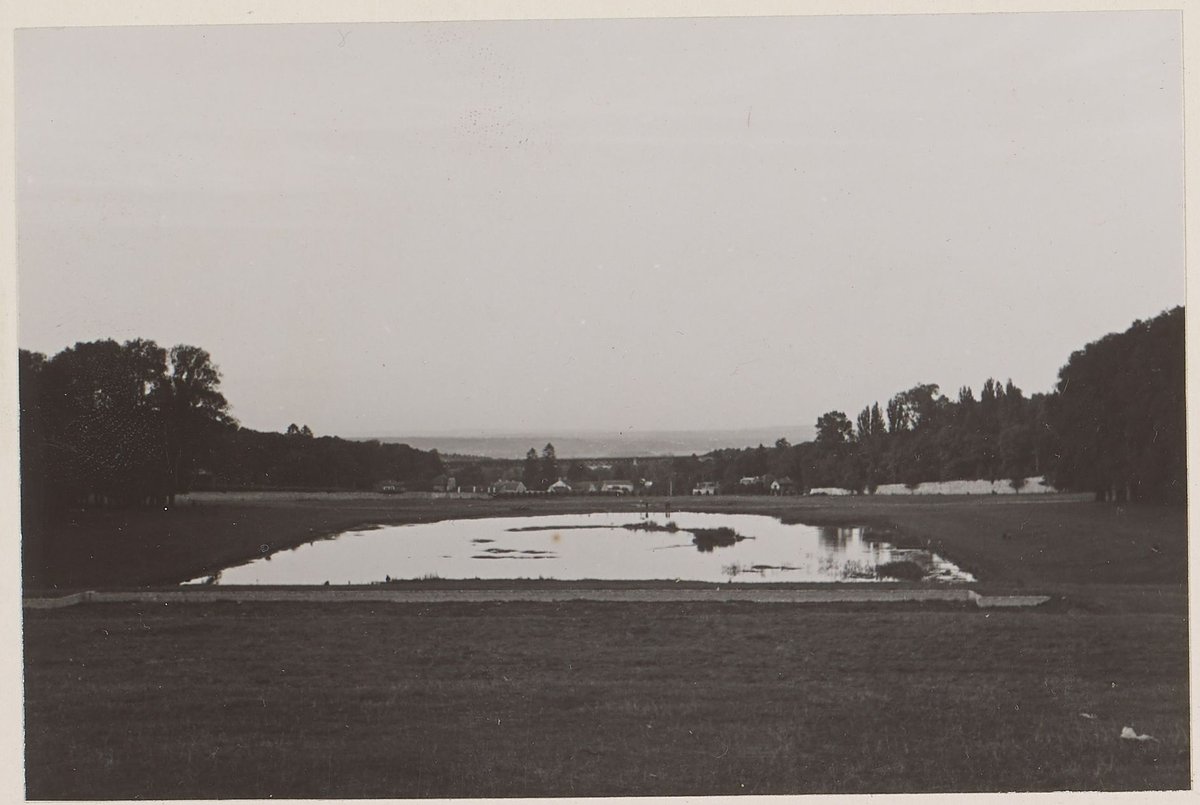
Visiting Hours, Tickets, and History of Domaine National de Marly in Saint-Germain-en-Laye
Date: 23/07/2024
Introduction
Located in the picturesque town of Saint-Germain-en-Laye, France, the Domaine National de Marly is a captivating historical estate that offers visitors a unique glimpse into the opulent world of the French monarchy. Commissioned by King Louis XIV in the late 17th century, this estate was designed as a private retreat away from the grandiosity and formality of Versailles. The estate’s construction, overseen by the esteemed architect Jules Hardouin-Mansart, and the magnificent gardens laid out by the celebrated landscape architect André Le Nôtre, mark it as a significant architectural and cultural marvel (Château de Marly). The Domaine National de Marly, with its innovative layout of pavilions and advanced hydraulic systems like the famous ‘Machine de Marly,’ reflects the grandeur and ingenuity of the Baroque era (Machine de Marly). This guide aims to provide comprehensive information on the history, visitor details, and travel tips for exploring this magnificent estate, ensuring a memorable visit for history enthusiasts, architecture aficionados, and cultural explorers alike.
Table of Contents
- [History of Domaine National de Marly](#history-of-domaine-national-de-marlyhistory-of-domaine-national-de-marly)
- [Origins and Construction](#origins-and-constructionorigins-and-construction)
- [Architectural Significance](#architectural-significancearchitectural-significance)
- [Royal Retreat and Social Hub](#royal-retreat-and-social-hubroyal-retreat-and-social-hub)
- [Decline and Transformation](#decline-and-transformationdecline-and-transformation)
- [Restoration and Preservation](#restoration-and-preservationrestoration-and-preservation)
- [Visitor Information](#visitor-informationvisitor-information)
- [Ticket Prices and Purchasing Options](#ticket-prices-and-purchasing-optionsticket-prices-and-purchasing-options)
- [Visiting Hours](#visiting-hoursvisiting-hours)
- [Accessibility](#accessibilityaccessibility)
- [Nearby Attractions in Saint-Germain-en-Laye](#nearby-attractions-in-saint-germain-en-layenearby-attractions-in-saint-germain-en-laye)
- [Travel Tips and Best Times to Visit](#travel-tips-and-best-times-to-visittravel-tips-and-best-times-to-visit)
- [Unique Aspects](#unique-aspectsunique-aspects)
- [Cultural Impact and Legacy](#cultural-impact-and-legacycultural-impact-and-legacy)
- [Modern-Day Significance](#modern-day-significancemodern-day-significance)
- [Frequently Asked Questions (FAQ)](#frequently-asked-questions-faqfrequently-asked-questions-faq)
- [Conclusion](#conclusionconclusion)
- [References](#referencesreferences)
History of Domaine National de Marly
Origins and Construction
The Domaine National de Marly, located in Saint-Germain-en-Laye, France, has a rich history that dates back to the late 17th century. The estate was commissioned by King Louis XIV in 1679 as a private retreat away from the formalities of the Versailles court. The king entrusted the design and construction to his chief architect, Jules Hardouin-Mansart, who was also responsible for the expansion of the Palace of Versailles. The construction of the estate began in 1679 and was completed in 1686. The estate featured a grand château, twelve pavilions for the king’s guests, and extensive gardens designed by the famous landscape architect André Le Nôtre (Château de Marly).
Architectural Significance
The architectural design of the Domaine National de Marly was innovative for its time. The main château, known as the “Pavilion of the Sun,” was a relatively modest building compared to the grandeur of Versailles. It was flanked by twelve smaller pavilions, each named after a sign of the zodiac, which housed the king’s guests. This layout was intended to create an intimate and relaxed atmosphere, contrasting sharply with the rigid formality of Versailles. The estate also featured a series of water features, including the famous “Machine de Marly,” an elaborate hydraulic system designed to pump water from the Seine River to the estate’s fountains and gardens (Machine de Marly).
Royal Retreat and Social Hub
The Domaine National de Marly quickly became a favored retreat for Louis XIV and his close circle. The king would often escape to Marly to enjoy hunting, leisurely walks, and private gatherings. The estate was also a venue for lavish parties and entertainments, including theatrical performances and musical concerts. The exclusivity of Marly made it a coveted invitation among the French nobility, and being invited to Marly was considered a great honor. The estate’s intimate setting allowed the king to interact more freely with his guests, fostering a sense of camaraderie and relaxation that was absent at Versailles (Louis XIV).
Decline and Transformation
After the death of Louis XIV in 1715, the Domaine National de Marly gradually fell out of favor with the French court. His successors, Louis XV and Louis XVI, preferred other royal residences, and the estate was used less frequently. During the French Revolution, the estate was seized by the revolutionary government and its contents were auctioned off. The main château and several of the pavilions were demolished, and the estate fell into disrepair. In the 19th century, the remaining buildings were repurposed for various uses, including a porcelain factory and a military hospital (French Revolution).
Restoration and Preservation
In the 20th century, efforts were made to preserve and restore the Domaine National de Marly. The French government acquired the estate in 1928, and it was designated a national historic site. Restoration work focused on the remaining structures and the gardens, which were meticulously restored to their original design by André Le Nôtre. Today, the estate is managed by the Centre des Monuments Nationaux and is open to the public. Visitors can explore the beautifully restored gardens, the remaining pavilions, and the Musée Promenade, which houses a collection of artifacts and exhibits related to the history of Marly (Centre des Monuments Nationaux).
Visitor Information
Ticket Prices and Purchasing Options
Tickets to the Domaine National de Marly can be purchased online through the official website or at the entrance. Prices may vary depending on the type of ticket (e.g., general admission, guided tours). Discounts are often available for students, seniors, and large groups. It’s recommended to check the official site for the most up-to-date pricing information.
Visiting Hours
The Domaine National de Marly is typically open daily, but visiting hours can vary seasonally. It’s best to visit the official website for current opening hours before planning your visit.
Accessibility
The estate is committed to accommodating visitors with disabilities. There are accessible paths throughout the gardens and ramps for easy access to the pavilions and museum. Wheelchairs are available upon request.
Nearby Attractions in Saint-Germain-en-Laye
While visiting the Domaine National de Marly, consider exploring other historical sites in Saint-Germain-en-Laye, such as the Château de Saint-Germain-en-Laye and its beautiful gardens, or the Forest of Saint-Germain-en-Laye for a nature walk.
Travel Tips and Best Times to Visit
The best times to visit the Domaine National de Marly are during the spring and summer months when the gardens are in full bloom. Early mornings and weekdays are ideal for avoiding crowds. Consider bringing a picnic to enjoy in the gardens for a truly leisurely experience.
Unique Aspects
Guided tours are available and provide a deeper understanding of the estate’s history and architecture. Photographic spots abound, especially around the beautifully restored water features and pavilions.
Cultural Impact and Legacy
The Domaine National de Marly holds a significant place in French cultural history. It represents the epitome of the French Baroque style and the grandeur of the Sun King’s reign. The estate’s innovative design and intimate atmosphere influenced the development of other royal retreats in Europe. The legacy of Marly is also reflected in art and literature, with numerous paintings, engravings, and writings depicting the estate and its lavish lifestyle. The estate’s history continues to captivate visitors and scholars alike, offering a glimpse into the opulent world of the French monarchy (French Baroque).
Modern-Day Significance
Today, the Domaine National de Marly is a popular tourist destination, attracting visitors from around the world. The estate offers a unique blend of history, architecture, and natural beauty, making it a must-visit for anyone interested in French history and culture. The meticulously restored gardens provide a tranquil setting for leisurely walks, while the museum offers an in-depth look at the estate’s fascinating history. Special events and exhibitions are also held throughout the year, further enhancing the visitor experience. The Domaine National de Marly stands as a testament to the enduring legacy of Louis XIV and the grandeur of the French Baroque era (Tourism in France).
Frequently Asked Questions (FAQ)
Q: What are the Domaine National de Marly visiting hours?
A: Visiting hours vary seasonally. Please check the official website for current opening times.
Q: How much do tickets to the Domaine National de Marly cost?
A: Ticket prices vary. Discounts are available for students, seniors, and groups. Visit the official site for the latest pricing.
Q: Is the Domaine National de Marly accessible for people with disabilities?
A: Yes, the estate has accessible paths and ramps. Wheelchairs are available upon request.
Q: Are guided tours available?
A: Yes, guided tours can be booked to enhance your visit with detailed historical insights.
Q: What nearby attractions can I visit?
A: Nearby attractions include the Château de Saint-Germain-en-Laye and the Forest of Saint-Germain-en-Laye.
Conclusion
The Domaine National de Marly stands as a testament to the grandeur and cultural richness of the French Baroque era, offering a unique blend of history, architecture, and natural beauty. From its origins as a royal retreat for King Louis XIV to its transformation and restoration, the estate encapsulates the opulence and innovation of its time. Today, it continues to captivate visitors with its meticulously restored gardens, historical exhibits, and serene ambiance. Whether you’re exploring the estate’s architectural marvels, strolling through the beautifully designed gardens, or delving into its rich history at the Musée Promenade, the Domaine National de Marly promises an enriching and immersive experience. As a popular tourist destination, it not only preserves the legacy of Louis XIV but also provides a tranquil escape into the lush landscapes of Saint-Germain-en-Laye. For those planning a visit, spring and summer offer the best opportunities to enjoy the gardens in full bloom, while guided tours provide deeper insights into the estate’s historical significance. Embrace the charm and elegance of the Domaine National de Marly and discover the timeless allure of this remarkable piece of French heritage (Centre des Monuments Nationaux, Tourism in France).
